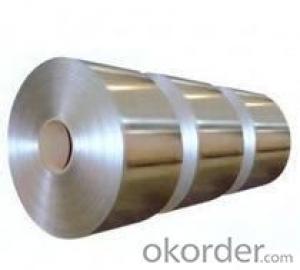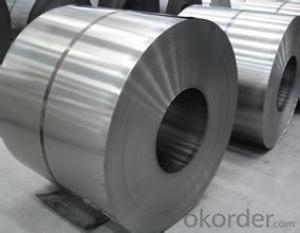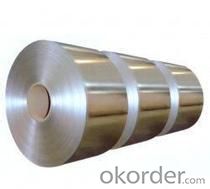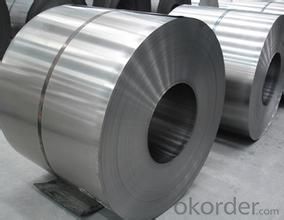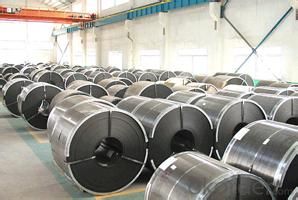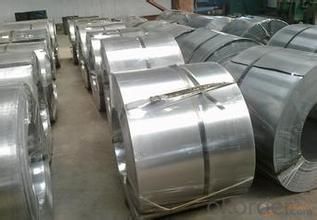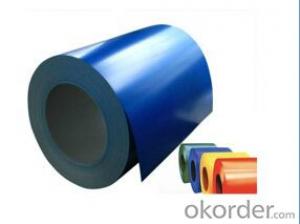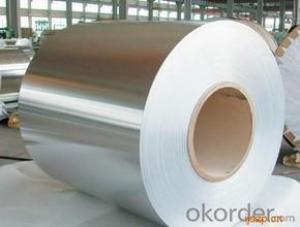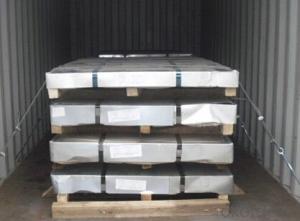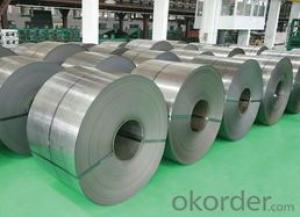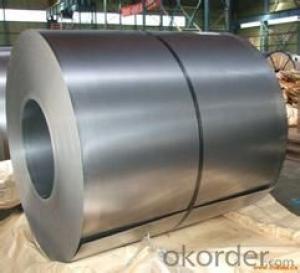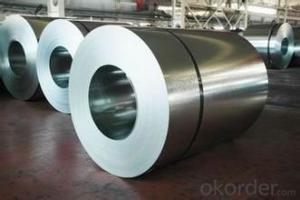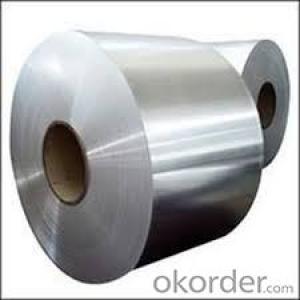excenllent cold Rolled Steel Coil/Sheet in Good Quality
- Loading Port:
- Tianjin
- Payment Terms:
- TT OR LC
- Min Order Qty:
- 100 m.t.
- Supply Capability:
- 5000000 m.t./month
OKorder Service Pledge
OKorder Financial Service
You Might Also Like
Description:
The raw material of cold rolled steel coil/sheet is high quality hot rolled product, and after pickling, kinds of new technology and new process of global cold rolling production have been applied. Therefore the manufacturing, home appliance, automobile etc.
Specification:
COLD ROLLED STEEL | |
Thicknenss | 0.10mm-4.00mm |
Width | 600mm-2000mm |
Sheets length | 1200-6000mm |
Coil inner diameter | 508-610mm |
Surface treatement | matt finish/bright finish,oiling/dry, bright anneal/black anneal |
Coil weight | 3-5t |
Package & Delivery:
Package details: Standardseaworthy packing for international delivery.
Delivery: According to theexact quantity of your order.
Images:
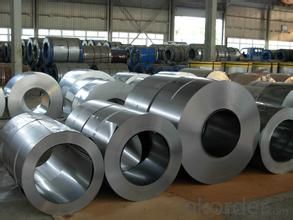
We can ensure that stable quality standards are maintained, strictly meeting both market requirements and customers’ expectations. Our products enjoy an excellent reputation and have been exported to Europe, South-America, the Middle-East, Southeast-Asia, Africa and Russia etc.. We sincerely hope to establish good and long-term business relationship with your esteemed company.
- Q: How are steel coils used in the manufacturing of storage tanks?
- Steel coils are used in the manufacturing of storage tanks as they are rolled into cylindrical shapes and welded together to form the tank's body. The coils provide strength and durability to the structure, ensuring the tank can withstand the pressure and weight of stored materials.
- Q: What is the minimum thickness of a steel coil?
- The specific grade and type of steel being used, along with the manufacturing process, can cause the minimum thickness of a steel coil to vary. Generally, a steel coil is typically about 0.001 inches (0.0254 millimeters) thick. It is worth mentioning that this value is a general rule and may change depending on the industry's or application's specific requirements and standards.
- Q: How can I tell the wear resistance, strength, ect from the name of the steel?how could I tell the difference between 420 and 440 steel. what does the HC in 420 HC steel mean? what do the numbers and letters in s30v steel mean?
- If your question implies how to tell the differences just by looking at the actual knife then I'd say there is no real way to do that. Just about all high carbon steel's look alike. You should be able to tell the difference between a stainless steel, but which one is anybodies guess, and a carbon steel however.
- Q: What is the type of stainless steel used in knifes.
- If your talking about a folding pocket knife, I think that it's basically six one way and a half dozen the other. I actually do prefer stainless for my pocket knives. I don't want to oil a knife to the degree I feel carbon requires, only to then stick it my pocket to attract dirt to the knife and oil to my pants. I'm the exact opposite on sheath knives though. I like 1095 carbon steel, plain edge sheath knives. I'll thrash on them HARD, and I rarely have major edge problems. Of course, I require them to be coated with some kind of powder coat or the like, because they can rust, but I do try and keep them clean and dry when in the sheath, so they won't pit the uncoated edge. My reasons for this sheath knife preference is multi-fold. First, these knives are simply affordable. I don't spend $80 dollars on a outdoors sheath knife. I use the tool too hard to want to spend more. I don't like the more traditional stainless steels such as AUS-8, 420HC, and 440C (not to mention the HORRENDOUS 440A) because I feel that the all else being equal, a stainless blade will bend before a carbon blade will break. I also think that carbon holds an edge at least as well, if not better, than traditional stainless, and it's much easier to hone. I don't know much about these new laminates, other than the very hard, but not so tough. They seem to be POSSIBLY too brittle for my use. That, combined with the fact that they cost a FORTUNE, means that I just won't be considering them.
- Q: What are the dimensions of steel coils used in the furniture industry?
- The dimensions of steel coils used in the furniture industry can vary depending on the specific application and requirements of the furniture manufacturer. However, typically, steel coils used in the furniture industry have dimensions ranging from 0.20mm to 3.00mm in thickness and 600mm to 2000mm in width. The length of the coils can also vary, but it is commonly around 1000mm to 3000mm. These dimensions allow for flexibility in shaping and forming the steel coils into various furniture components such as frames, springs, and structural supports.
- Q: How are steel coils packaged for shipment?
- Steel coils are typically packaged for shipment by being tightly wound, strapped with steel bands, and then secured onto wooden pallets. The coils are often covered with protective wrapping or placed inside steel containers to ensure safe transportation and prevent damage or corrosion.
- Q: I'm assuming that brass is flexible, expands and then bounces back to it's original shape. But if aluminum and steel expand and don't contract wouldn't they cause guns to jam more often for example?
- Some Blazer/CCI loaded ammo comes with aluminum casings, it is easy to tell because they have a very dull finish compared to the nickel. These cases are not safe to reload. There is also Wolf brand from Russia that has a steel casing, it looks laqured and it may or may not be able to be reloaded.
- Q: and what are the four main elements in STAINLESS steel? x
- decreasing the carbon content fabric will strengthen the ductility, which will make it greater versatile. Carbon in metallic varieties brittle cementite (iron carbide) which will strengthen the hardness and capability of metallic.
- Q: What is the role of steel coils in the construction industry?
- Steel coils play a crucial role in the construction industry as they are used for various purposes. They are primarily used in the fabrication of structural components such as beams, columns, and trusses, providing strength and stability to buildings. Steel coils are also utilized in the manufacturing of roofing and siding materials, reinforcing bars, and various mechanical components. Their versatility, durability, and resistance to corrosion make them an essential material in construction, ensuring the longevity and safety of structures.
- Q: I just want to know why is cold steel katana a very good sword?? How can you tell if a cold steel katana is good or not
- The only way to be sure about the steel in your sword is to take it to a university and have its components analyzed by the metals department. If there are high concentrations of carbon and iron and not much else, then you know the steel in your sword is of high quality and has been made well. There really is no other way short of bashing the sword against something else to determine how brittle it is or how strong it is. Ideally, you want a combination of both...high carbon steel on the outside to hold an edge, low carbon steel on the inside to give it strength and allow it to bend instead of break.
Send your message to us
excenllent cold Rolled Steel Coil/Sheet in Good Quality
- Loading Port:
- Tianjin
- Payment Terms:
- TT OR LC
- Min Order Qty:
- 100 m.t.
- Supply Capability:
- 5000000 m.t./month
OKorder Service Pledge
OKorder Financial Service
Similar products
Hot products
Hot Searches
Related keywords
